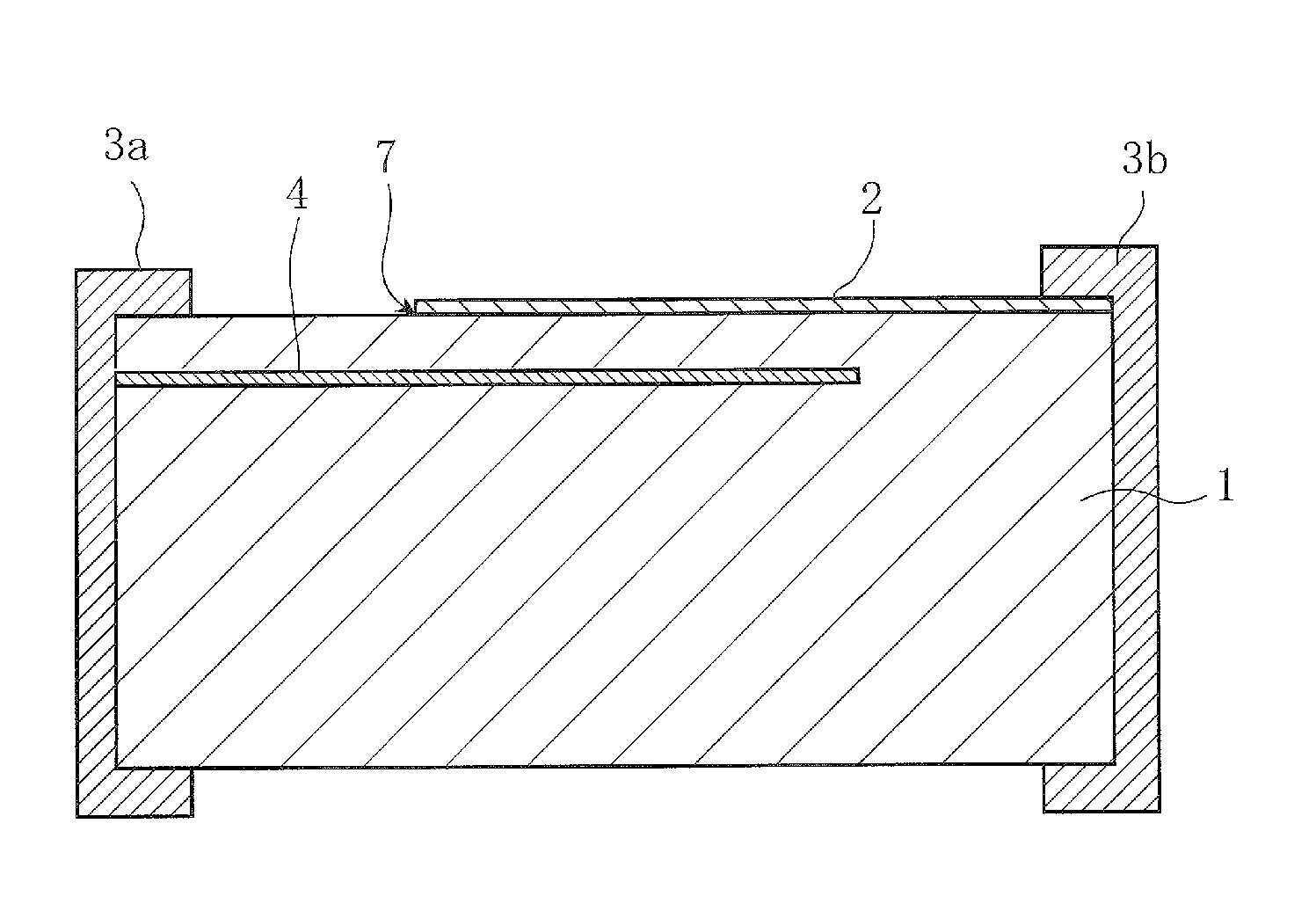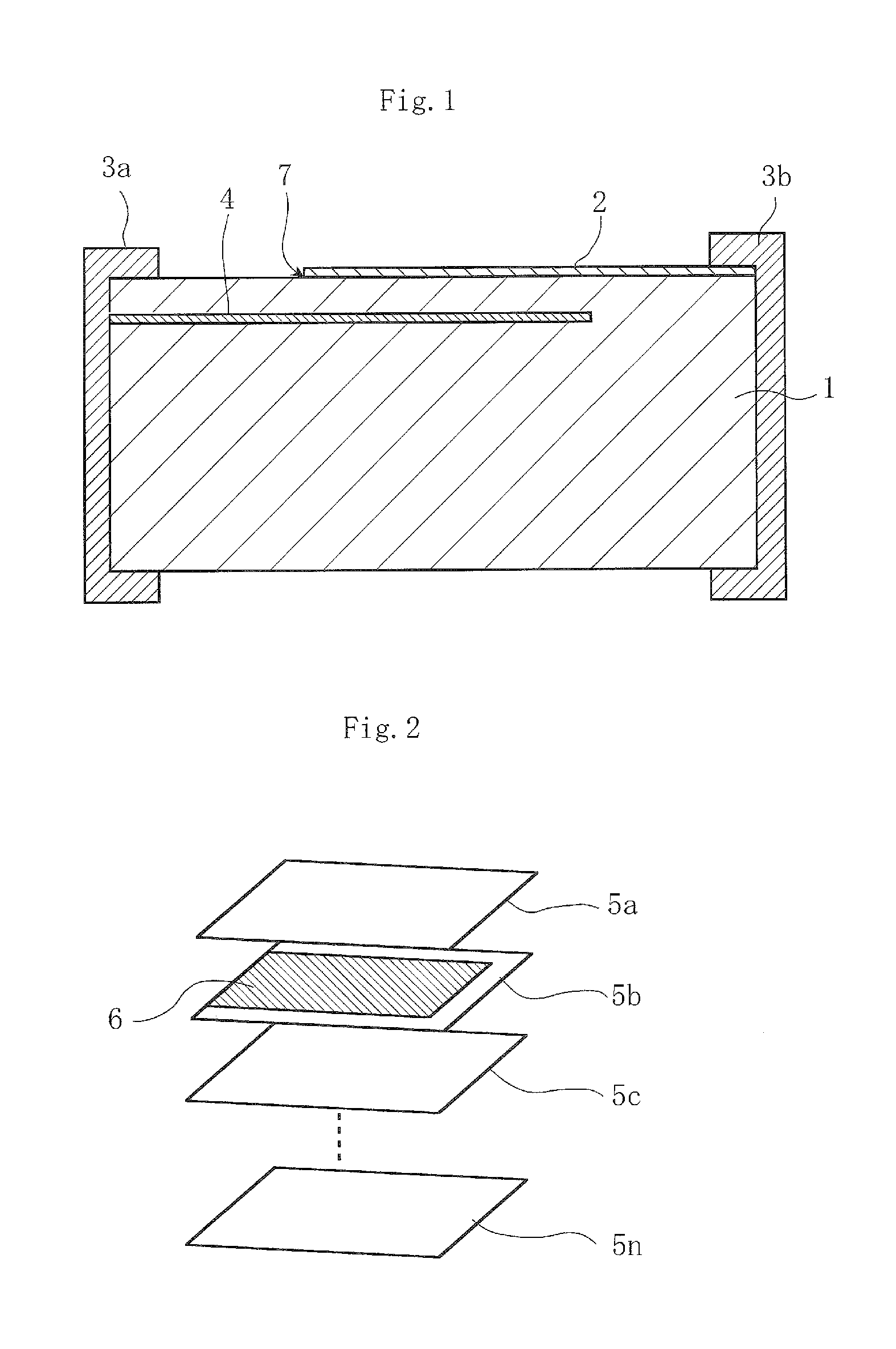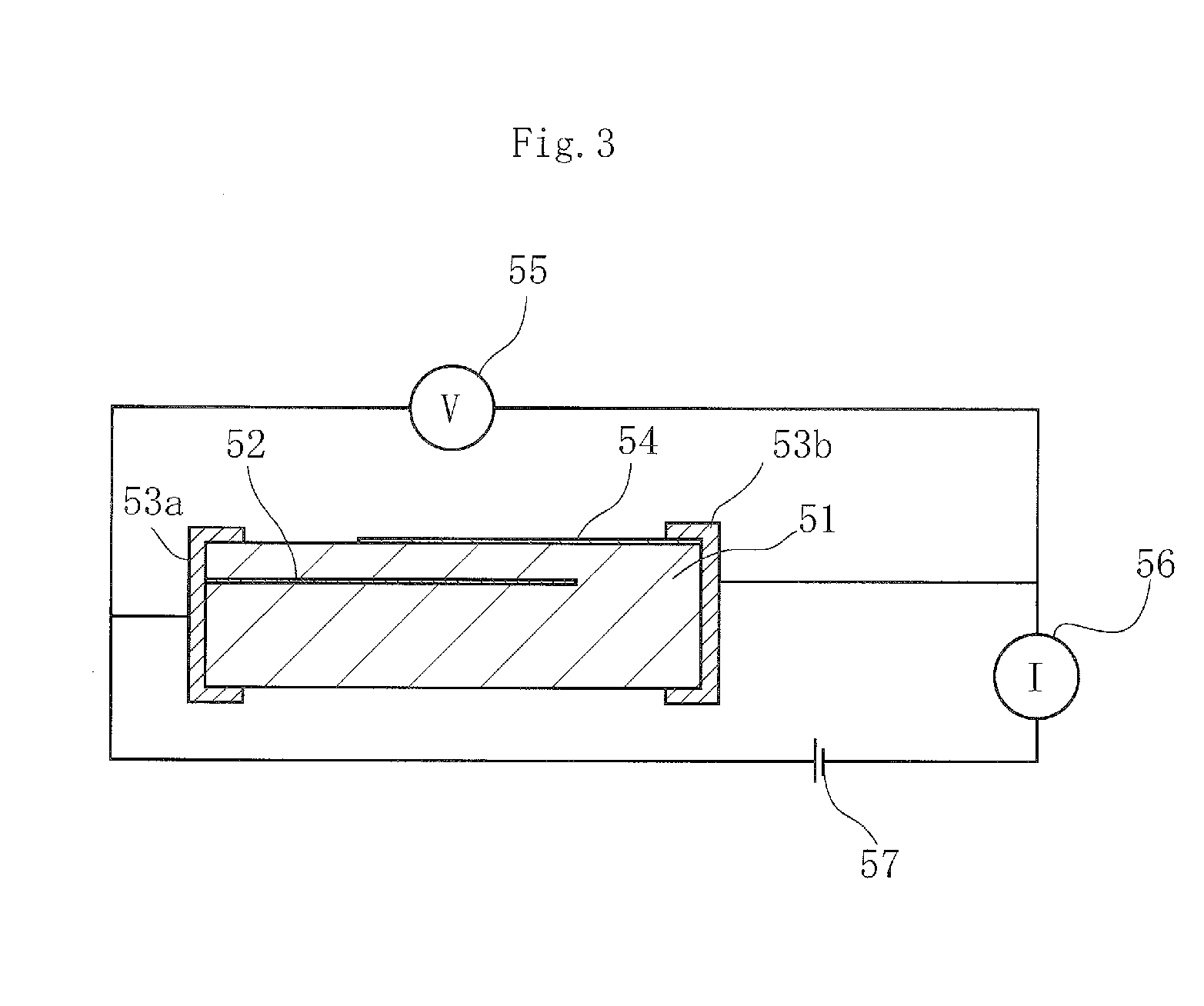Gas sensor, method for manufacturing gas sensor, and method for detecting gas concentration
a technology of gas sensor and manufacturing method, which is applied in the direction of liquid/fluent solid measurement, material resistance, metallic material coating process, etc., can solve the problems of unstable semiconductor layer at high temperatures, and low durability of sensors, and achieve high temperature stability, good durability, and good characteristics
- Summary
- Abstract
- Description
- Claims
- Application Information
AI Technical Summary
Benefits of technology
Problems solved by technology
Method used
Image
Examples
example 1
[0077][Production of a ZnO Sintered Body]
[0078]ZnO to serve as main component and Al2O3 as a dopant were weighed out to make the respective proportions in mol % 99.99 mol % and 0.01 mol %. These apportioned materials were mixed and milled together with purified water in a ball mill using PSZ beads as milling medium, yielding a mixture in the form of slurry with an average particle diameter of 0.5 μm or less. This slurry mixture was dried by dehydration and granulated to a particle diameter of approximately 50 μm. The resulting particles were calcined at a temperature of 1200° C. for 2 hours, yielding a calcined powder.
[0079]The thus obtained calcined powder was mixed and milled again together with purified water in a ball mill using PSZ beads as milling medium, yielding slurry of milled matter with an average particle diameter of 0.5 μm. This slurry of milled matter was dried by dehydration and then mixed together with an organic solvent and a dispersant. A binder and...
example 2
Production of Samples
Sample Numbers 21 to 25
[0122]Samples of sample numbers 21 to 25 were produced using the same method and procedure as for sample number 1, except that the molar ratio of Ni to Zn, or Ni / Zn, in preparing the (Ni, Zn)O green sheets was matched to the proportions in Table 2.
[0123]A sample of sample number 26 was produced using the same method and procedure as for sample number 1, except that the inner electrode material was LaNiO3.
[0124]The production of LaNiO3 was as follows.
[0125]That is, NiO and La2O3 powders were weighed out to a molar ratio of 2:1. These apportioned materials were mixed and milled together with purified water in a ball mill using PSZ beads as milling medium, yielding a mixture in the form of slurry. This slurry mixture was dried by dehydration and granulated to a particle diameter of approximately 50 μm. The resulting particles were calcined at a temperature of 1200° C. for 2 hours, yielding a calcined powder. The calcined powde...
PUM
| Property | Measurement | Unit |
|---|---|---|
| Percent by mole | aaaaa | aaaaa |
| Concentration | aaaaa | aaaaa |
| Molar ratio | aaaaa | aaaaa |
Abstract
Description
Claims
Application Information
 Login to View More
Login to View More - R&D
- Intellectual Property
- Life Sciences
- Materials
- Tech Scout
- Unparalleled Data Quality
- Higher Quality Content
- 60% Fewer Hallucinations
Browse by: Latest US Patents, China's latest patents, Technical Efficacy Thesaurus, Application Domain, Technology Topic, Popular Technical Reports.
© 2025 PatSnap. All rights reserved.Legal|Privacy policy|Modern Slavery Act Transparency Statement|Sitemap|About US| Contact US: help@patsnap.com



